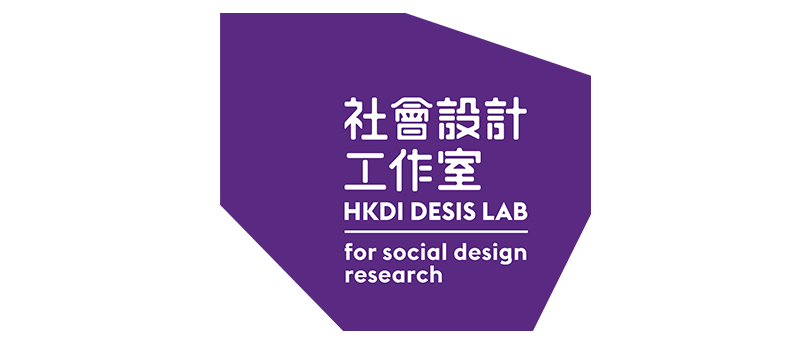Founded in summer 2013, the HKDI Design for Social Innovation and Sustainability (DESIS) Lab for Social Design Research is a new cross-disciplinary action research group at HKDI.
Its aim is to set up a research platform for social design, an emerging field advocating a new approach to design: ‘designers as enablers of social change’.
It is part of the DESIS International Network and collaborates with more than 50 DESIS Labs around the world. The network aims to advance international knowledge in design for the social good and to develop social practices that benefit Hong Kong society.
Projects
Jockey Club "Tree Upcycling" Youth Co-creation Project
Jockey Club "Tree Upcycling" Youth Co-creation Project
It is a three-year programme brings the vision of local log upcycling to reality. It encourages young people to learn about local trees, integrate social innovative design and craftsmanship, regenerate local tree resources, and promote the social concept of "harmony between human and tree".
The first edition of the project runs from 2022 to 2023, with a series of three programmes in total. Echoing the upcycling theme, the project itself is also a recurring act, with a new round of project taking place every year until 2024. Throughout the one-year journey, the Tree Project prepares various educational sessions and community engagements by integrating a range of introductory and advanced level woodworking workshops, field trips, exhibitions, sharing sessions and seminars.
Facebook: www.facebook.com/jctreeup
IG: https://www.instagram.com/jctreeup/
Website: https://www.jctreeup.org/




HKMiX Series
HKMiX Series
HKMiX Series
The Hong Kong Makers in Croxover series explores novel approaches to Hong Kong crafts and craftsmanship with Hong Kong makers. In definition, the word “Makers” not only means“a person that makes or produces something”, it also means "creator, constructor; producer; architect; designer; originator; inventor; founder; author, etc.”. The definitions vary. Our definition of a maker consists of the embodiment of craftsmanship's spirit, innovative ideas, and the core-values of creation. In developing interdisciplinary collaborations, co-creations, and a young talents nurturing program, we hope to reveal the creative spirit behind every maker in Hong Kong.
Makers (n.) [/ˈmeɪkə/]
-
A person that makes or produce something
-
Creator; Constructor; Producer; Architect; Designer; Originator; Inventor; Founder; Author
Projects
#001 Our Makers of …Documentaries of Hong Kong Makers
“The Makers of Hong Kong ,The Making of Hong Kong” - Actualizing one's creative values is not only the act of making, it is also the act of reinventing Hong Kong.
#002 Co-Creation: An New Approach of Making
In our view, co-creation is not just the exchange of techniques, crafts skills, or design methods; it is a process of collaboration between makers from different backgrounds, ideas, and values. By connecting different local makers and brands, we could develop a new approach to creativity, design, and crafts for the sustainable development of local society and cultural industry.
WELL-BEING: NEW NORMAL Series- 2022/23 Elderly Lived Alone
WELL-BEING: NEW NORMAL Series- 2022/23 Elderly Lived Alone


WELL-BEING: NEW NORMAL Project aims to raise the awareness about wellness of different communities in various circumstances through social design research. "WELL-BEING: NEW NORMAL" is set as the main direction with various focused areas for establishing Applied Design Research Workgroup respectively. Due to the serious impact by the epidemic, lots of changes have been made and adopted in our society. However, it is found that “Elderly Living Alone” (ELA) may be the high-risk community and hard to adopt changes in living. In considering of urgency and need, ELA will be the kick-off focus of the project.
The project is led by two local emerging talents, Jacky Chan and Jacky Au with their design research teams. As DESIS Lab Creative-in-Residences, they guided and supervised our students on the research and residential projects for local communities. Students, as our future designer of Hong Kong society, are able to develop knowledge of design research and creative lens for social issues. By euipping and preparing them with sensitivity of social issues, we believe the HKDI students are able to contribute into the future of design industry as well as Hong Kong society.

_RGB%20PREVIEW-01.jpg)
Community Service Partnership Scheme with Urban Renewal Authority – Upcycling for local community and people in need
Community Service Partnership Scheme with Urban Renewal Authority – Upcycling for local community and people in need
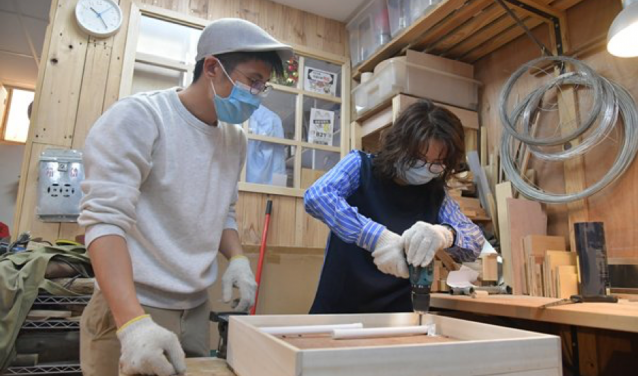
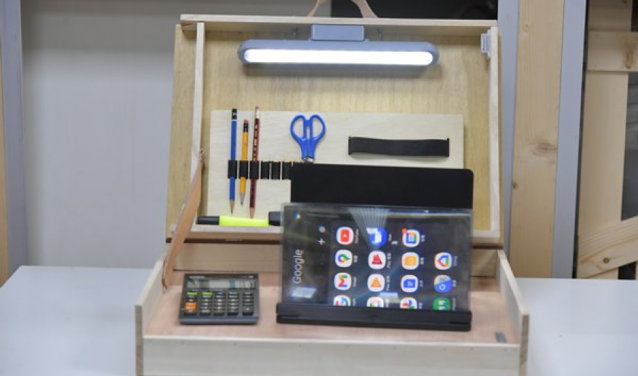
HKDI Design students joined Community Service Partnership Scheme (CSPS) of the Urban Renewal Authority (URA) to develop design ideas and creative products that improve the living environment of old districts’ underprivileged groups. The URA has launched a community service partnership scheme (CSPS) as a platform for collaboration with universities and NGOs to serve the underprivileged groups in the old districts through volunteer services, while at the same time promote service learning of the young people.
Collaborated with URA volunteer, HKDI design student Ms. Lee Man-Hung employed upcycling design method to utilize wood wastes and wine boxes to create a ‘multiple usage treasure box’(多用百寶箱) for children living in Sham Shui Po subdivided flats. Considering the COVID-19 stay home policy for primary students and limited space of subdivided flats, designs of the ‘multi-usage treasure box’contains functions of stationery storage, LED lighting and mobile phone screen magnifier, in order to improve the learning experience and environment during pandemic period.
Micro/Co-living Design in Hong Kong
Micro/Co-living Design in Hong Kong
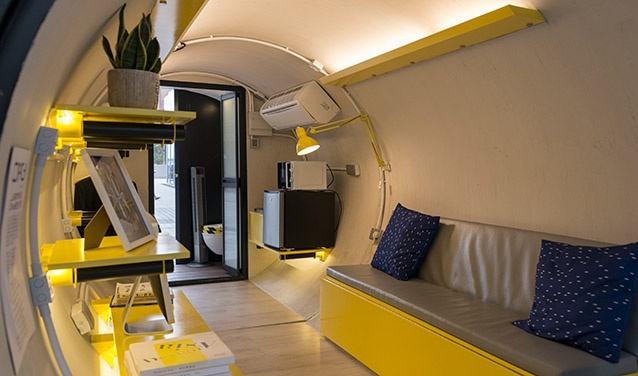
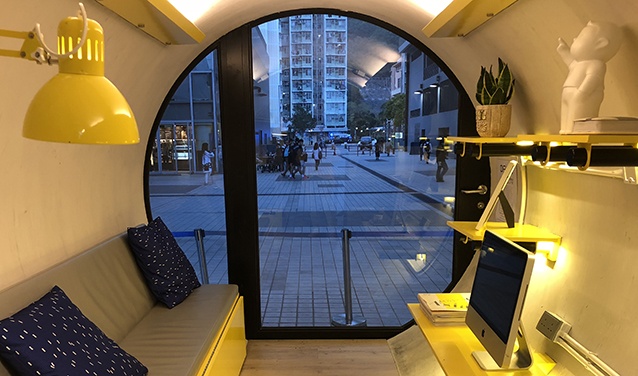
A chronic shortage of affordable accommodation has been a great challenge in many cosmopolitan cities like Hong Kong. In order to inspire students how design can resolve the problems of affordable housing shortage in Hong Kong, HKDI DESIS Lab and the Department of Architecture, Interior and Product Design undertook a collaborative effort with James Law Cybertecture to organize a social design project entitled “Micro/Co-living Design in Hong Kong” from April to May 2018.
The project invited design students from the Department of Architecture, Interior and Product Design (AIP), inclusive of the Higher Diploma (HD) in Interior Design, HD in Architectural Design, and HD in Furniture and Lifestyle Product Design for a one and a half months social design engagement activity. Students participated in a studio and seminar on new living and lifestyle design, social design engagement workshops, and a micro/co-living design forum in which they explored solutions for future urban lives. The collaboration also included the physical exhibition of the OPod Tube Housing prototype as an illustration of the concepts of micro-living.
Open Dementia and Magic: Empathising Dementia by Disrupting the Everyday
Open Dementia and Magic: Empathising Dementia by Disrupting the Everyday
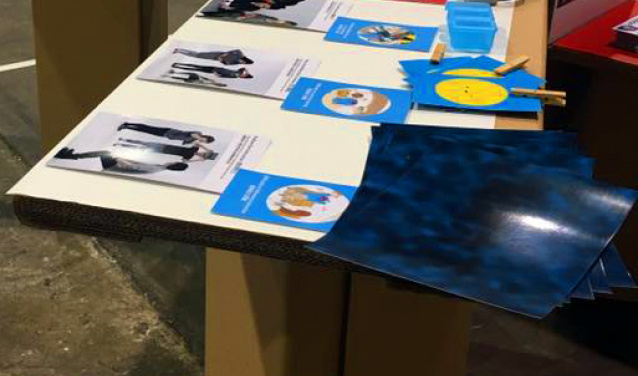
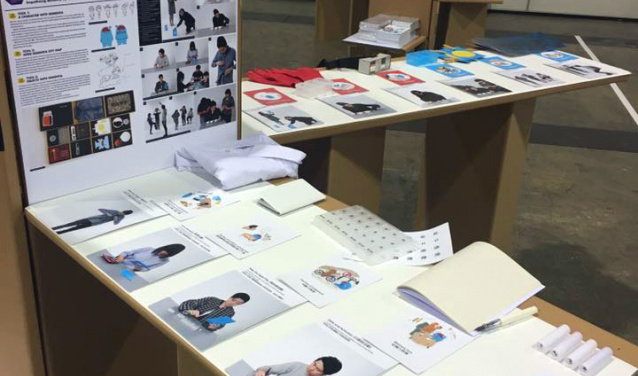
In summer 2015, the Jockey Club Centre of Positive Ageing commissioned HKDI DESIS Lab to design and prototype a set of ‘empathy tools’ for Hong Kong citizens. The tools were required to enable people to better understand the illness of dementia. From its launch in April 2016, the toolkit was rolled out for training across Hong Kong communities.
To conclude the design involvement, HKDI DESIS published an A2 leaflet to explain the design rationale.
- A Character With Dementia
- Ageless: highlights dementia as a medical condition but not a natural ageing process. In other words, dementia is not a natural characteristic of older people and should not suggest that they belong to any social category or have a certain age, gender or even race.
- A non-human being: having a humanoid physique that can perform daily tasks and having facial expressions to show the psychological states of the character.
- Named as the Brain Man: with reference to the term ‘dementia’ in Chinese, we decided to highlight the brain as the main standout point of the character and added an eraser over the brain to represent the degeneration of the organ.
- Open Dementia City Map
- Asking a disruptive question: ‘What if everyone in the city has dementia?’
- As the Brain Man forms the main population of the ‘Open Dementia City’, the map also serves to show that being perceived as abnormal, irrational or out of the ordinary is not intrinsic to the symptoms or condition of dementia, but shaped through the environment, that is, the other people in the city.
- Objects with Dementia
- Eleven sets of ‘demented objects’: objects with dementia, which can magically dement the participants temporarily.
- These ‘Demented Objects’ can help people to experience dementia in three ways:
- Disabled tools: stimulating tools to disable your capability.
- Confused tools: twisted tools to make users confused in a situation.
Performed tools: disrupting games for users to ‘perform’ dementia in a group.
Fine Dying: Designing Living & Dying
Fine Dying: Designing Living & Dying
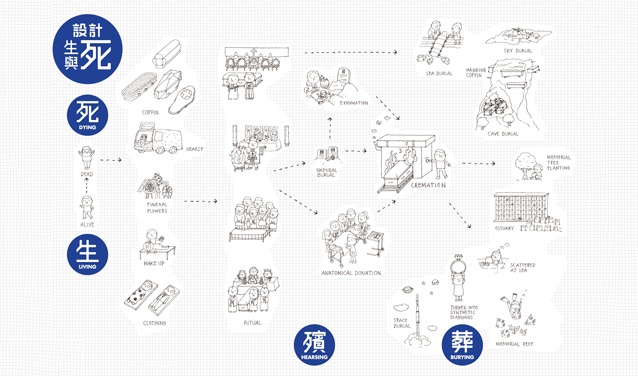

In July 2013, the HKDI DESIS Lab kick-started a study of Living and Dying, collaborating with William Outcast (陳偉霖), an activist of death education who was born with skin cancer. The study aimed at exploring new design implications for everyday life by enabling people from all backgrounds to be active in the design processes.
Fine Dying involved 300 HKDI design students and 100 senior citizens in Hong Kong over a two month period of co-designing dying matters. In Oct to Nov 2013, the lab held a Design Possible showcase that included several projects, workshops and exhibitions. Central to the programme were 50 ‘Tables of Ideas’ lined up as a public encounter that advocated new design concepts between life and death. The showcase also displayed different design products and concepts based on the projects themes, which included:
- STORIES (不老志) recollected life stories for identities and futures
- IMAGE (造夢紀) developed older people’s stories into photographic and/or illustrative portraits
- SPACE (空間轉) transformed spaces for life recollection and showed new possibilities for funeral spaces & cemetery designs
- OBJECTS (信物記) made objects designed to change the relationship between the living and those passed away
Contact Us
Contact
C819, Block C, Hong Kong Design Institute
Thank you!
You have successfully submitted your inquiry. Our staff will come to you soon.

